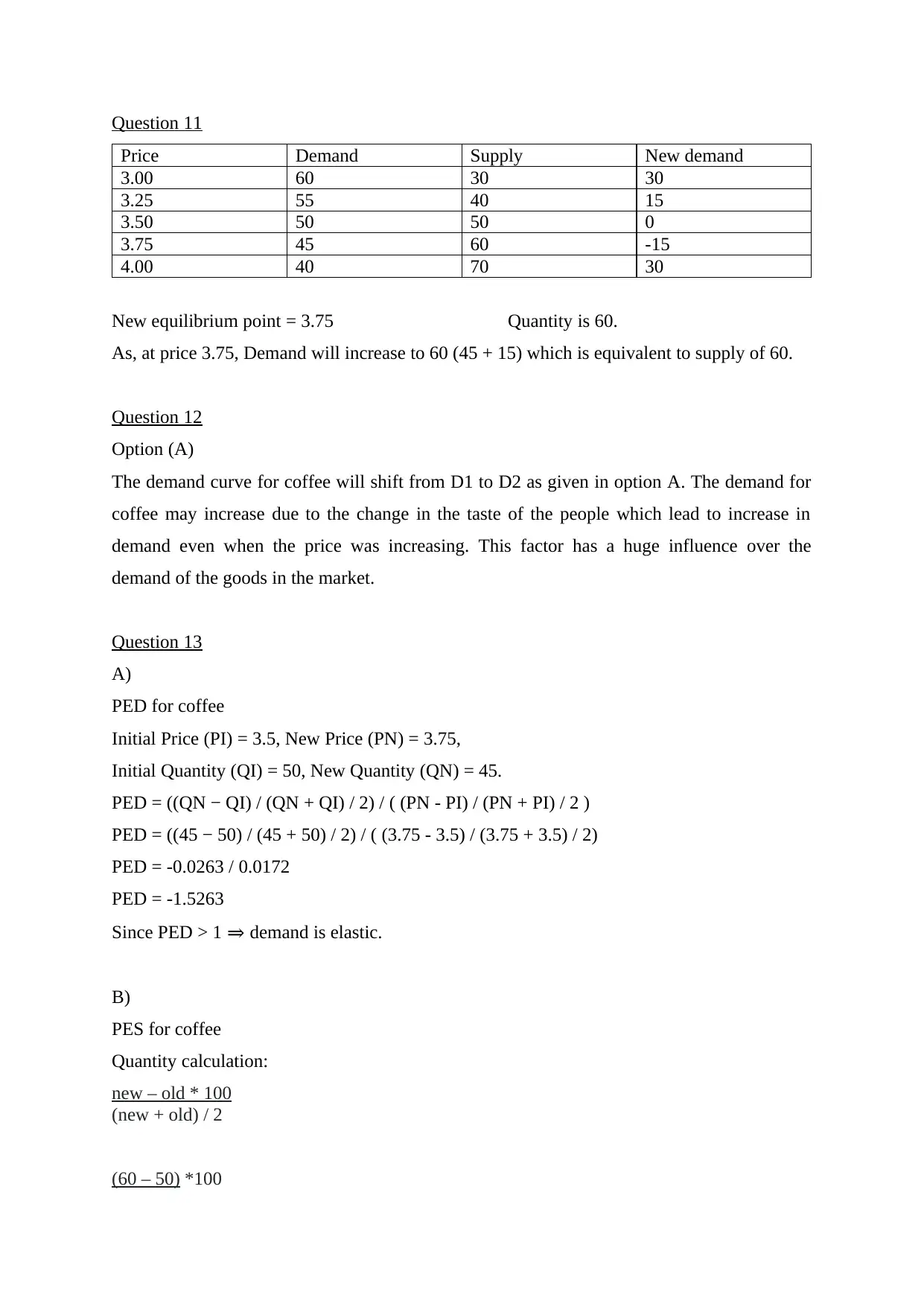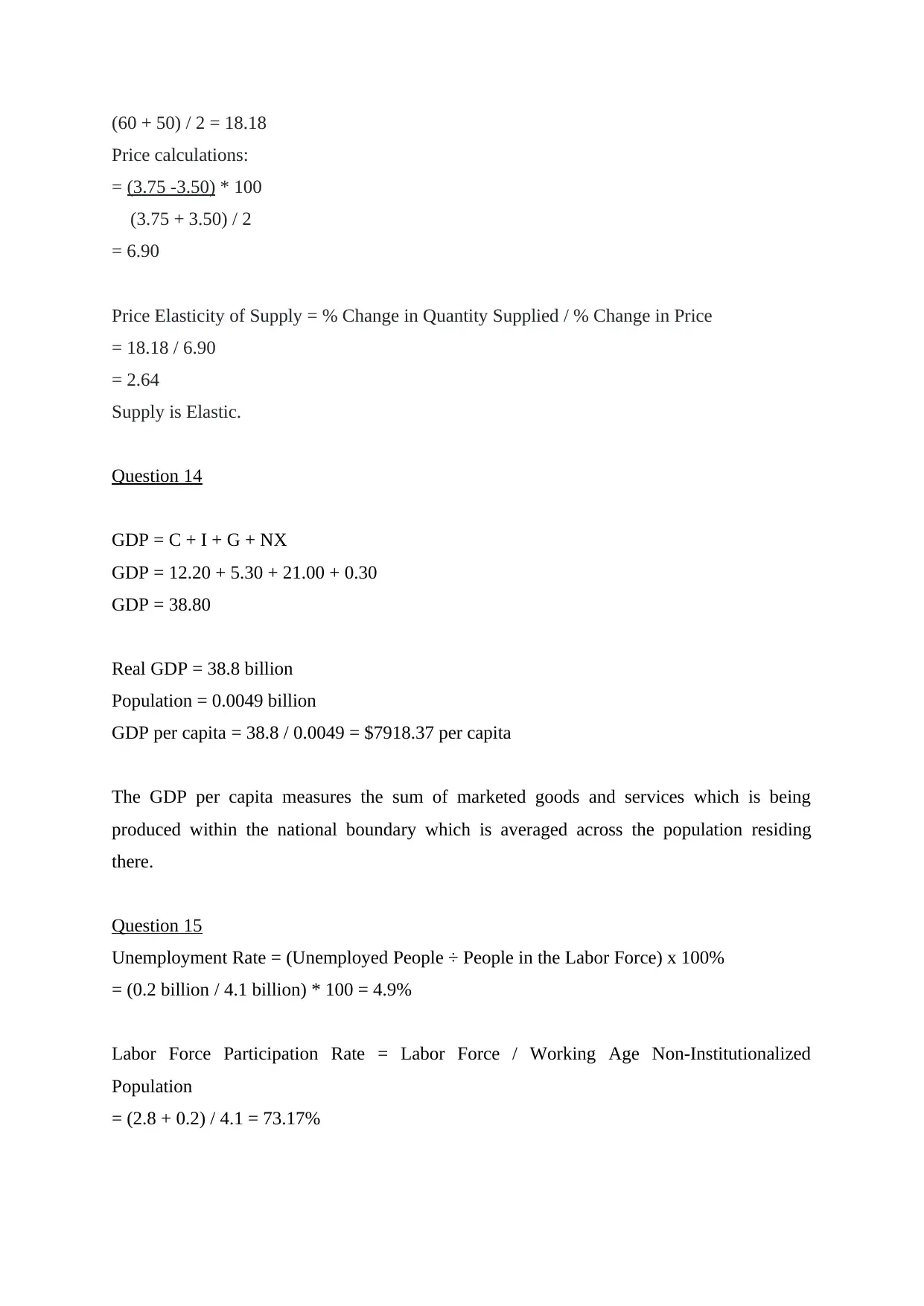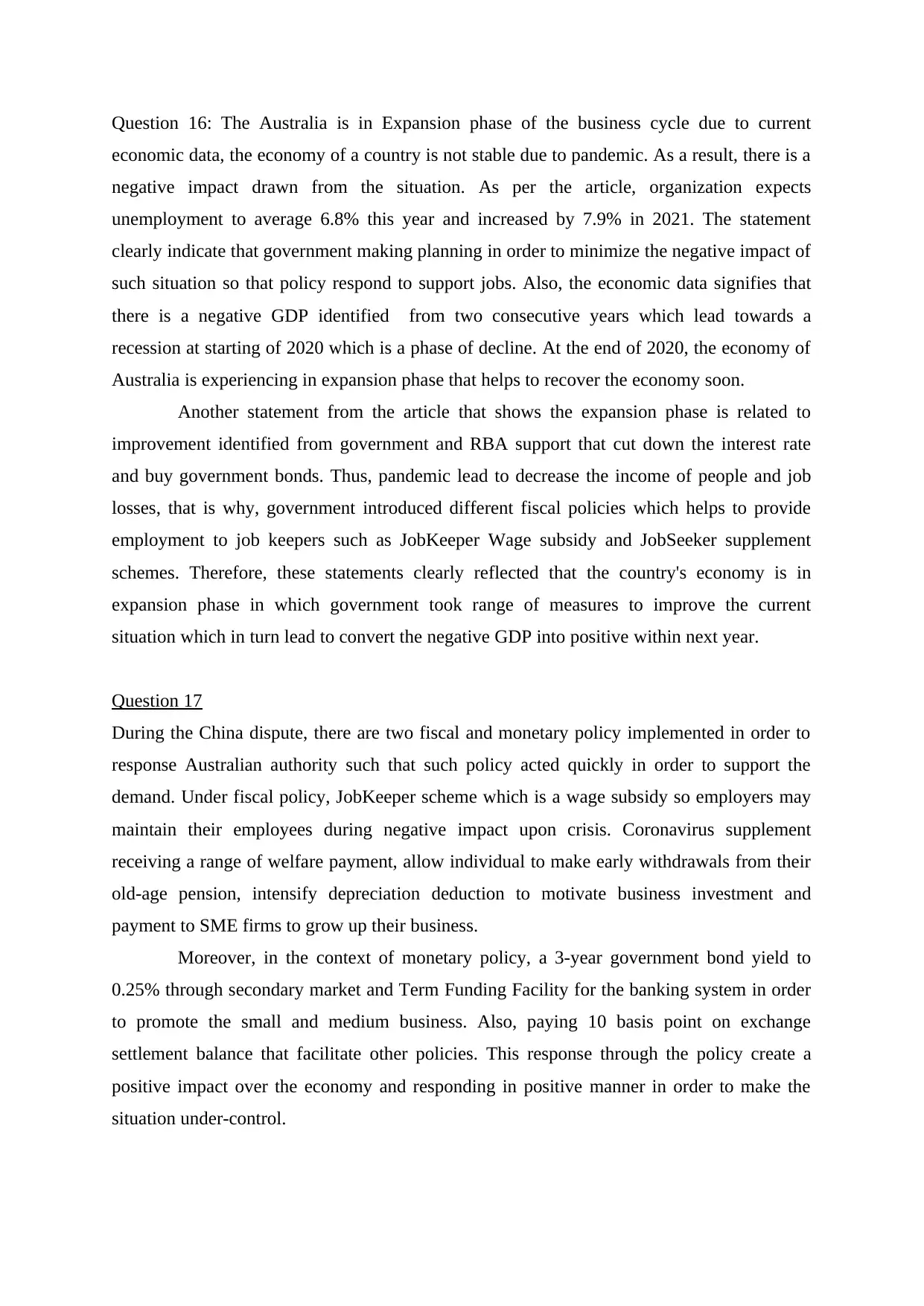Economics Homework: Understanding Market Dynamics and Policy Impacts
VerifiedAdded on 2023/06/18
|5
|894
|146
Homework Assignment
AI Summary
This economics assignment solution addresses several key concepts. It begins by analyzing the impact of new equilibrium points on supply and demand. It further examines the shift in demand curves due to changing consumer preferences. The price elasticity of demand (PED) and price elasticity of supply (PES) for coffee are calculated and interpreted. The assignment then calculates real GDP and GDP per capita, followed by the unemployment rate and labor force participation rate. Finally, the solution discusses Australia's economic phase within the business cycle, identifying it as an expansion phase, and outlines fiscal and monetary policies implemented in response to economic challenges, such as the China dispute, including JobKeeper and other support schemes.
1 out of 5






![[object Object]](/_next/static/media/star-bottom.7253800d.svg)